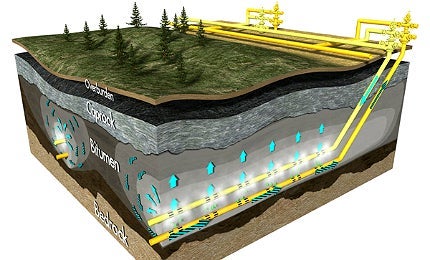

Sunrise is a bitumen deposit located approximately 37m (59.5km) north-east of Fort McMurray, in Alberta, Canada. According to December 2011 estimates, the deposit is estimated to hold 3.7 billion barrels of bitumen, including 0.36 billion barrels of proved, 2.48 billion barrels of probable and 0.86 billion barrels of possible reserves.
The onshore oil sands project is being jointly developed by Husky Energy and BP, through a 50-50 partnership. Husky Energy operates the field. The two partners invested $2.5bn in the first phase of the project development.
The two companies entered into an agreement in 2008 to establish a partnership with equal ownership for the production, refining and marketing of the Sunrise oil sands project. Under the agreement, Husky transferred 50% of its fully owned Sunrise project in exchange for 50% ownership in the BP-operated refinery near Toledo in Ohio.
First oil from the deposit was achieved in March 2015.
Approval to develop the bitumen deposit
The environmental impact assessment (EIA) and conceptual study for the development of the Sunrise field were started ten years ago, in 2002. In February 2004, the Energy Resources Conservation Board (ERCB, formerly Alberta Energy and Utilities Board) and Environment and Sustainable Resource Development (ESRD, formerly Alberta Environment) received a public disclosure document from Husky.
Commercial application to build and operate the 200,000 barrels a day (bbl/d) oil sands project was submitted to the two provincial authorities in August 2004. ERCB approved the project in December 2005, while ESRD gave its nod in October 2006. An amended version of the project was approved in January 2009.
Development of the Canadian onshore oil sands
The project is scheduled to be developed in three phases with the goal of reaching an ultimate production capacity of 200,000bbl/d. The first phase has a production capacity of 60,000bbl/d.
Front end engineering and design (FEED) for the first phase was completed in January 2010. Detailed engineering, procurement and construction (EPC) was launched in November 2010.
Main components of phase one included construction of a central processing facility (CPF), with two 30,000 barrels a day plants; development of surface facilities and site infrastructure; drilling of 49 well pairs on eight well pads; five water supply wells and four disposal water wells; and diluent and diluted bitumen (dilbit) pipelines to / from Edmonton.
As of November 2012, construction on phase one was 50% complete. Phase two is in the engineering stage.
The produced bitumen is transported to BP-operated Toledo refinery through existing pipelines.
Steam assisted gravity drainage technology
Bitumen from the Sunrise oil sands is produced by employing an enhanced oil recovery technology known as steam assisted gravity drainage (SAGD). The technology keeps the surface land disturbance to a minimal level and does not require large tailings ponds or open pit mining.
SAGD is applied by drilling a pair of horizontal wells into the reservoir, with a spacing of five metres. The upper well is used as injector well, while the lower well is used as a producer well.
Steam is continuously injected into the upper well to heat the reservoir bitumen and reduce its viscosity. This causes the heated oil to flow into the producer well (lower horizontal well), where it is pumped out.
Contracts for Husky Energy and BP’s Sunrise project
SNC-Lavalin was contracted in March 2008 to provide FEED services for the Sunrise project. WorleyParsons was commissioned to provide engineering services for the energy island section of the project.
In December 2010, Saipem was given a $1bn engineering, procurement and construction (EPC) contract for the Sunrise CPF.
Apart from production and storage of extracted bitumen, the scope of the contact includes oil treatment, removal of oil from produced water, water treatment and steam generation.
Worley Parsons serves as an EPC contractor for the field facilities. Midstream pipeline and terminal services were provided by Enbridge as part of a $475m contract announced in September 2010. Atco Structures & Logistics was contracted in May 2011 to provide site services for the project.
Related content
Horizon Oil Sands Project, Alberta, Canada
The Horizon Oil Sands Project is being developed by Canadian Natural Resources Ltd.
Suncor Project Voyageur, Fort McMurray, Alberta
Project Voyageur is the centrepiece of the Suncor growth strategy. This is a multiphase plan to increase its oil sands production to more than 550,000 barrels a day by 2016, a 120% rise on 2004’s production.
Scotford Refinery Upgrade, Alberta, Canada
In December 1999, Shell Canada Ltd, the country’s number three integrated oil company, announced the upgrading of its Scotford crude oil refinery facility as well as the construction of a new upgrader next to it.

